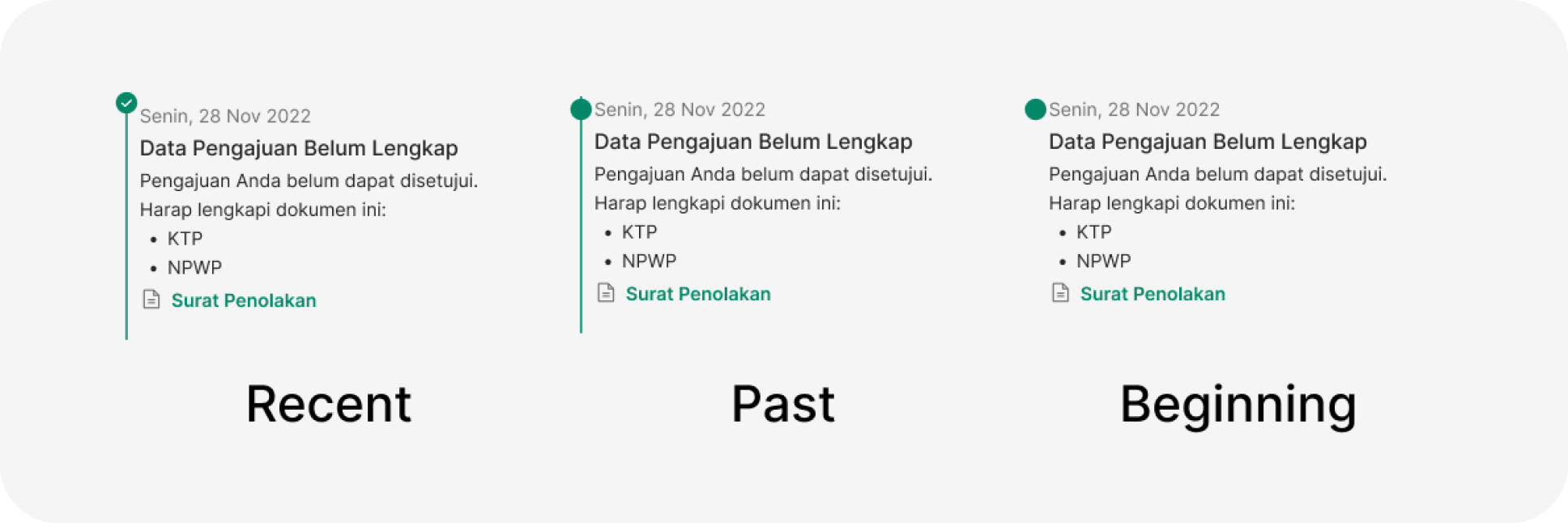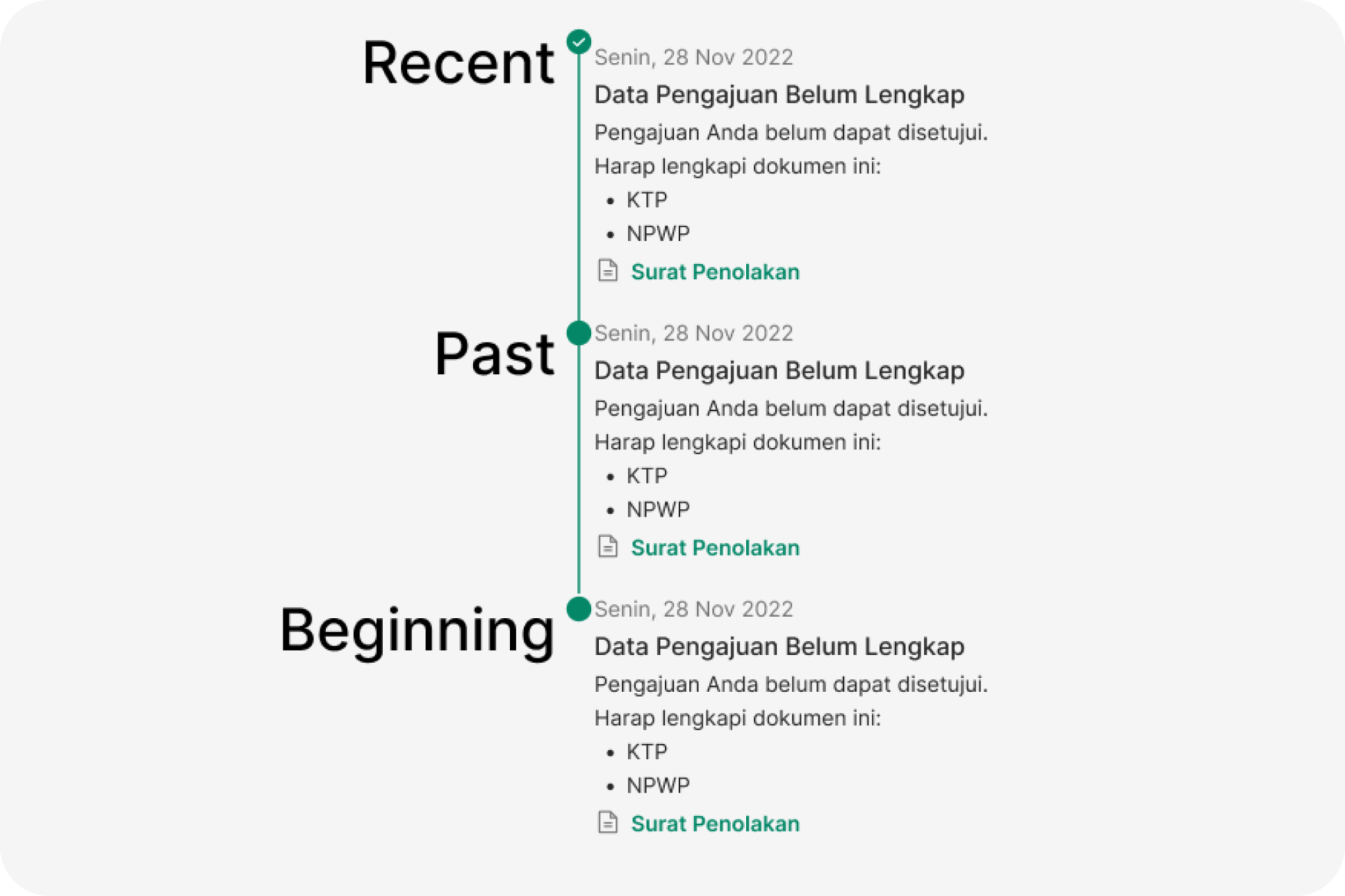Timeline
Timeline components are visual elements used to display and track the progress of a process or events over a specific period of time. They provide a chronological representation of activities, changes, or milestones, offering users a clear and organized way to understand how events unfold over time. Timeline components are valuable for visualizing project timelines, historical events, schedules, and any other scenarios where time-based information needs to be presented in an accessible and comprehensible manner.
Variant
Here are some types of timeline, including:

Anatomy

- Time line
- Point status
- Time
- Title
- Content description
- Icon extras (Optional)
Usage
Timeline components are versatile tools that find application in a variety of contexts, enhancing the presentation and comprehension of chronological data and events. One common use of timeline components is in project management, where they enable project teams to outline tasks, milestones, and deadlines in a visually coherent manner. Timelines provide a clear, at-a-glance overview of the project’s progression and help stakeholders stay aligned on key dates and objectives.
In the realm of historical storytelling and education, timeline components prove invaluable for displaying the sequence of significant events and their interrelationships. They facilitate a structured exploration of history, allowing learners to follow the development of societies, cultures, or movements over time.
Moreover, in content-rich websites or applications, timelines offer users an engaging and intuitive way to browse and discover content. For instance, a news website can employ a timeline to categorize and present news stories, enabling users to explore events chronologically. Similarly, a company’s corporate history can be effectively showcased on its website through a timeline that outlines the major achievements and milestones over the years.
Timelines also have practical uses in personal productivity tools, allowing individuals to schedule tasks, track progress, and set goals over time. Furthermore, in the context of data visualization, timelines can be used to illustrate trends, changes, or patterns in datasets, making complex information more accessible and comprehensible to a broader audience.
Overall, the versatility of timeline components makes them a valuable addition to various interfaces, aiding in the representation and understanding of chronological data across different domains and industries. Their ability to convey information in a visually organized and time-based manner significantly contributes to improved communication and user engagement.


a set of timeline